Spanish Basque Country: Modern Comfort and Traditions
The Basque Country isfFor those dreaming of a European retirement that blends urban sophistication with stunning natural landscapes. The Spanish Basque Country (Euskadi) presents an compelling and often overlooked destination. Its cities are compact, clean, and incredibly efficient.
A Hub of Modern Living
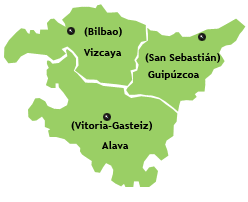
- Bilbao, (Bilbo) an example of urban regeneration, offers world-class art at the Guggenheim Museum, and a thriving culinary scene.
- San Sebastián (Donostia), with its La Concha Bay, is a jewel of elegance, famed for its pintxo culture and international film festival.
- The green capital of Vitoria-Gasteiz offers peaceful parks and a beautifully preserved medieval quarter.
English is widely spoken in tourist areas and among young people. But the locals warmly appreciate any effort to learn a few words of Spanish or Basque.
Gastronomy and Wellbeing
Retirement here is a treat for the senses, especially taste. The Basque Country is a global gastronomic powerhouse. Your daily routine could involve exploring vibrant markets, chatting with local fishmongers, and enjoying a leisurely pintxo crawl with friends. This is not just eating; it’s a cherished social ritual.
Nature on Your Doorstep
Beyond the cities lies a dramatic landscape perfect for an active retirement. The rugged coastline is dotted with picturesque fishing villages like Getaria and Hondarribia, perfect for a seaside lunch. Inland, rolling green hills give way to the majestic Pyrenees, offering endless opportunities for hiking, and cycling. The climate is temperate—mild summers and winters without extreme temperatures—making outdoor activities enjoyable year-round.
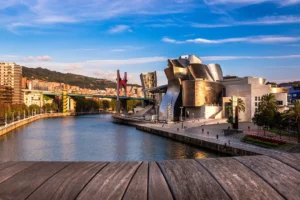
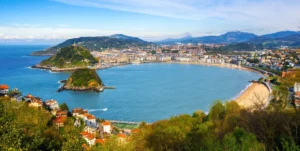
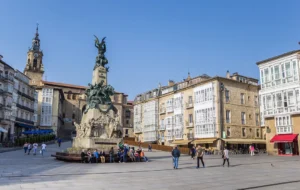
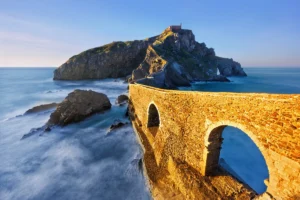
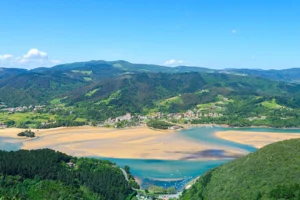
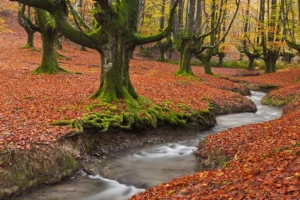

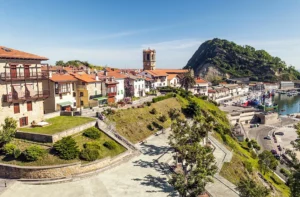
Basque Country Communications
The Spanish Basque Country (Euskadi) is convenient for residents and retirees to travel within the region and connect with the rest of Spain and Europe.
Airports (Air Access) ✈️
The region is served by three main airports, providing excellent domestic and international connectivity:
- Bilbao Airport (BIO) – Loiu: As the largest and most international, Bilbao Airport offers numerous direct flights across Europe, making it the primary gateway for international arrivals.
- San Sebastián Airport (EAS) – Hondarribia: Closer to the French border, this airport primarily handles domestic flights to major Spanish cities like Madrid and Barcelona.
- Vitoria-Gasteiz Airport (VIT): While smaller, Vitoria’s airport maintains services, with flights to Majorca, Málaga, Brussels, among others.
For a retiree, this multiple-airport setup provides flexibility for travel and for receiving visiting family and friends.
Trains and Buses 🚆🚌
The region boasts an integrated public transport system:
- Inter-city Rail: The national RENFE network provides long-distance, high-speed Alvia services to Spanish cities like Madrid and Barcelona from Bilbao and San Sebastián.
- Bus Stations: Bilbao’s Bilbao Intermodal and San Sebastián’s central bus station serve as major regional hubs, providing connectivity not only to Spanish destinations (via companies like ALSA) but also to other European cities.
- Regional Rail (Euskotren): The local Euskotren runs a scenic, narrow-gauge network, including a vital line connecting the capitals, Bilbao and San Sebastián, and the popular ‘Topo’ train linking San Sebastián with Hendaye in France. Bilbao also has a modern Metro.
- Buses: Buses are often the fastest option for travel between the three provincial capitals (Bilbao, San Sebastián, and Vitoria-Gasteiz). Companies like PESA and ALSA ensure frequent, comfortable services between major hubs and connect to the rest of Spain and Europe.
Highways 🚗
The highway network is crucial for connectivity, though it involves toll roads (Autopistas) and toll-free routes (Autovías):
- AP-8 (Autopista del Cantábrico): This major, mostly toll highway is the main east-west artery, connecting the French border via San Sebastián directly to Bilbao. It offers the fastest route along the coast.
- A-8 (Autovía del Cantábrico): West of Bilbao, the highway converts to the toll-free A-8, continuing the coastal connection into the rest of Northern Spain (Cantabria and Asturias).
- Alternative Routes: While the AP-8 is a faster, more direct option, parallel toll-free national roads (N-roads and Autovías) always exist by law, offering a scenic but slower alternative for budget-conscious drivers. The provinces are also linked by high-quality regional Autovías, such as those connecting to Vitoria-Gasteiz (Álava).
Basque Country vs. Euskalherria
When exploring northern Spain, it is important to understand the distinction between the Basque Country (País Vasco) as a political entity and Euskal Herria, the broader cultural and historical homeland of the Basque people. While the two terms are often used interchangeably in casual conversation, they actually describe different concepts.
The Basque Country (Comunidad Autónoma del País Vasco / Euskadi)
The Basque Country is one of Spain’s 17 autonomous communities. It is made up of three provinces
- Araba (Álava): Capital Vitoria-Gasteiz, which is also the capital of the autonomous community.
- Bizkaia (Vizcaya): Capital Bilbao.
- Gipuzkoa (Guipúzcoa): Capital Donostia-San Sebastián.
With a population of about 2.2 million, it is a politically recognized region within Spain that enjoys a high degree of self-government. The Basque Country has its own parliament, police force (the Ertzaintza), and unique fiscal autonomy, allowing it to collect and manage most taxes locally. For retirees, this political structure means strong public services, excellent healthcare, and a well-managed infrastructure. The Basque Country is defined by its administrative boundaries, similar to how Catalonia or Andalusia are defined.
Euskal Herria (The Basque Homeland)
Euskal Herria is a broader cultural concept that goes beyond the Spanish state. Literally meaning “the land of the Basque speakers,” it refers to all the territories where the Basque language (Euskara) and culture have historically been present. Euskal Herria includes:
- The three provinces of the Spanish Basque Country: Araba, Bizkaia, and Gipuzkoa.
- Navarre (Spain): A separate autonomous community with its own identity and government, but historically and culturally linked to the Basques.
- Northern Basque Country (France): Comprising three provinces—Labourd, Lower Navarre, and Soule—located within the French department of Pyrénées-Atlantiques.
Together, these seven territories form what many consider the true Basque homeland. Unlike the Basque Country (the Spanish autonomous region), Euskal Herria has no single political recognition. Instead, it exists as a cultural and linguistic reality that crosses modern state borders.
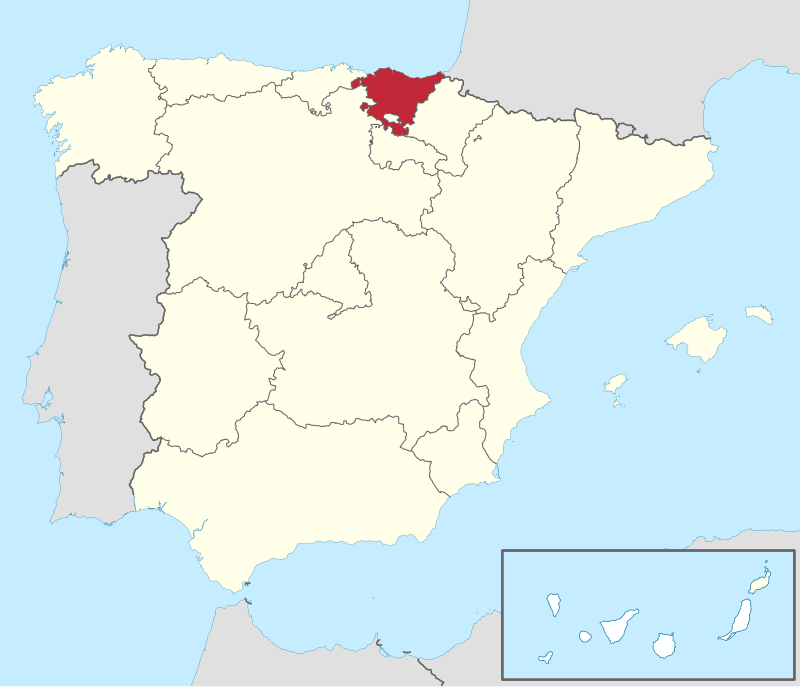
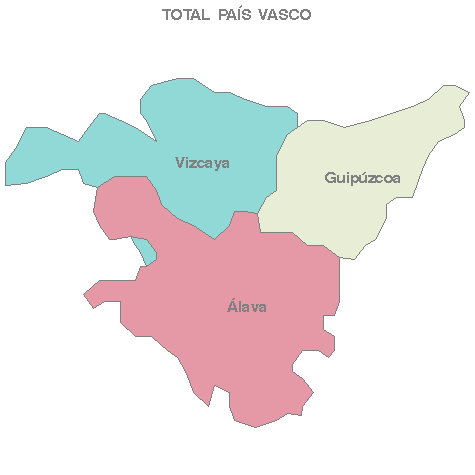
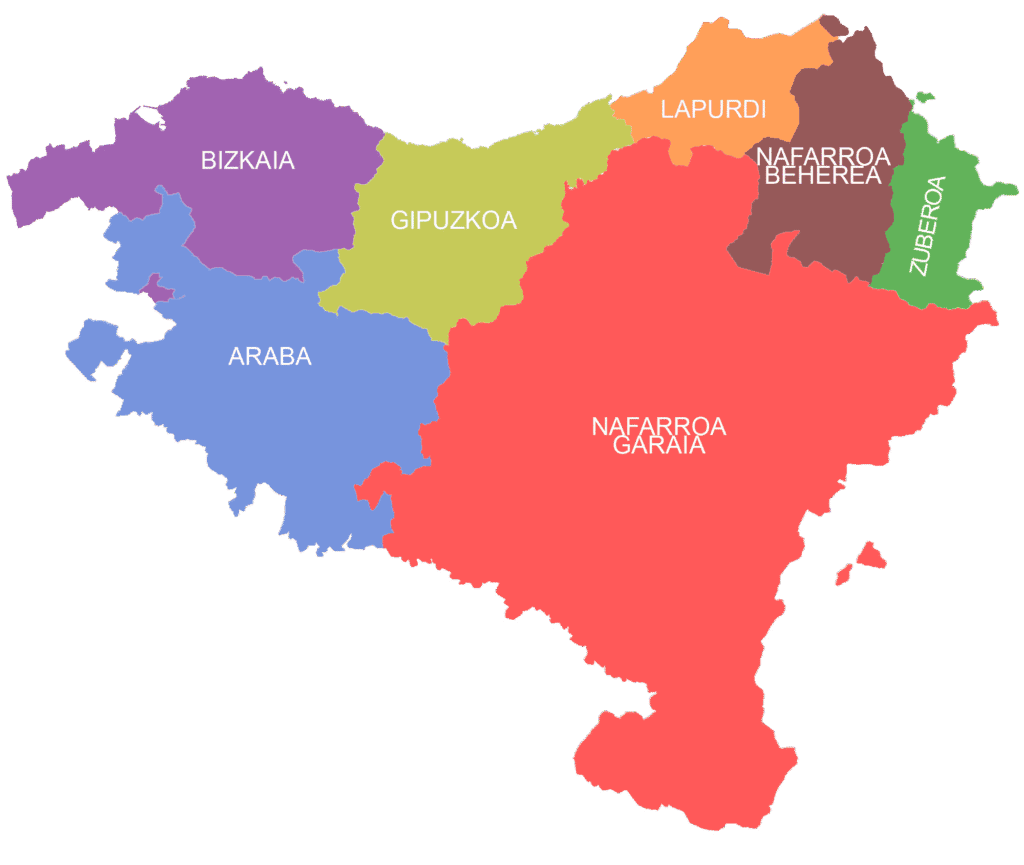
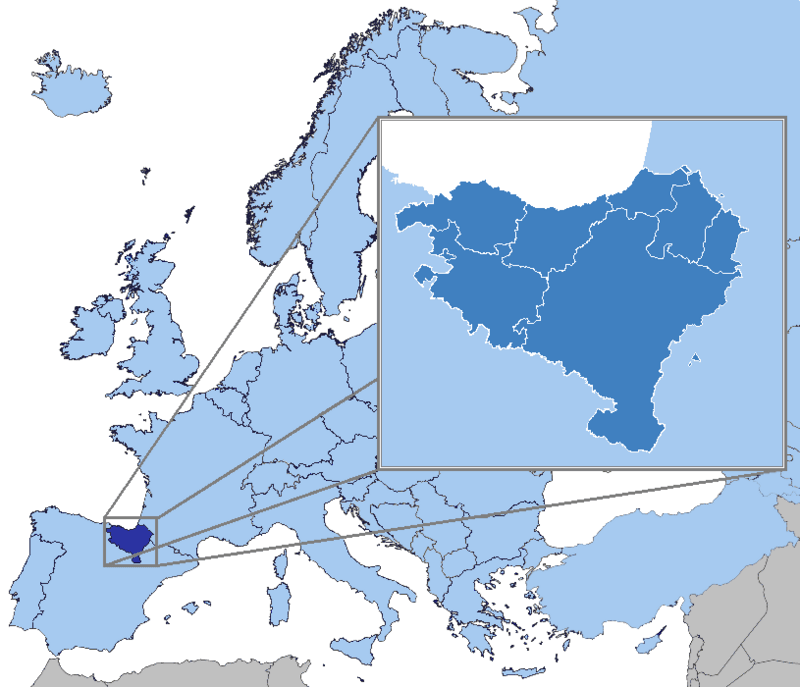
Key Differentiation for Retirees
| Feature | The Basque Country (Euskadi) | Euskal Herria |
| Type | Political and Administrative Autonomous Community of Spain. | Cultural, Linguistic, and Historical Region spanning two countries. |
| Location | North-central Spain. | Northern Spain and Southwest France. |
| Provinces/Regions | 3 Spanish provinces (Araba, Bizkaia, Gipuzkoa). | 7 regions (4 in Spain, 3 in France). |
| Relevance to Retirement | The legal jurisdiction for residence, taxation, healthcare, and local governance. | The cultural and historical context where the Basque identity and language exist. |
Basque Folklore
The Basque Country has a rich folklore rooted in ancient rituals, mythology, and seasonal celebrations. Many towns celebrate annual fiestas blending Catholic traditions with Basque identity, bringing together costumes, parades, and gastronomy.
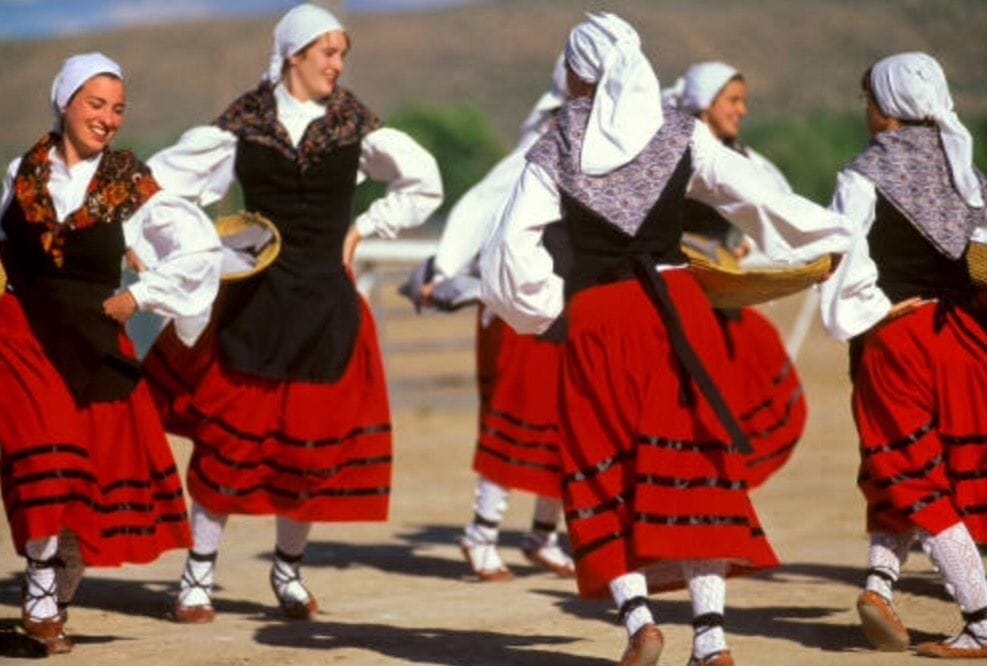
Traditional sports like pelota vasca (a fast-paced ball game) and rural strength contests (herri kirolak) remain popular at local festivals.
Folk dances such as the aurresku, often performed at weddings and public events, symbolize respect and celebration.
Music plays a central role, with instruments like the txalaparta (percussion) and trikitixa (accordion) giving a distinct Basque sound.
Euskera: The Basque Language
Euskera, or Basque, is one of Europe’s most ancient living languages, with no known relation to Spanish, French, or any other language family. In Spain, it is co-official with Spanish in the Basque Country and parts of Navarre, and many schools offer bilingual or Euskera-based education. Public services, media, and signage are often bilingual, making everyday life accessible for Spanish speakers while reinforcing Basque identity.
For retirees, Euskera is not essential for daily living, but learning a few words—like egun on (good morning) or eskerrik asko (thank you)—is always appreciated and helps build local connections.
Across the border in the French Basque Country (Iparralde), Euskera has no official status, as French is the only recognized national language. Even so, the language remains present, particularly in rural areas, with cultural associations and immersion schools (ikastolak) ensuring its survival among younger generations.
In towns such as Bayonne, Biarritz, and Saint-Jean-de-Luz, bilingual signage and cultural events highlight this enduring identity. While French is essential for daily life in that part of Euskal Herria, showing curiosity about Euskera is seen as a sign of respect and interest in the local culture.
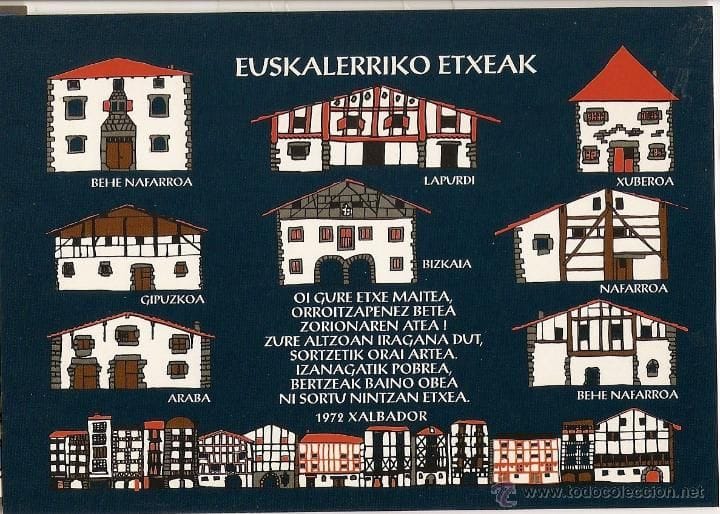
A Shared Basque Identity Across Borders
Whether in Spain or France, visitors quickly notice the strong cultural unity of Euskal Herria.
Whitewashed houses with red or green timber frames, traditional caserío farmhouses, and lively coastal fishing towns create a familiar architectural style on both sides of the border.
